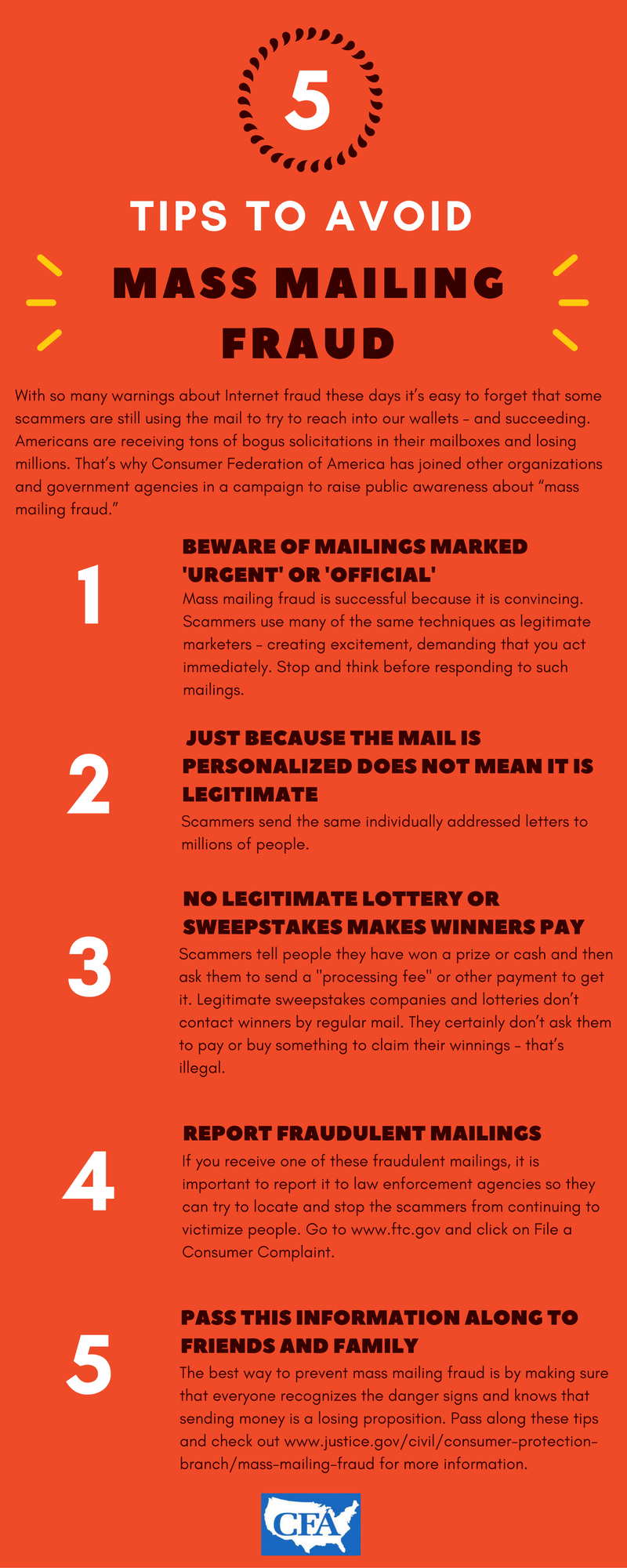With so many warnings about Internet fraud these days it’s easy to forget that some scammers are still using the mail to try to reach into our wallets – and succeeding. Americans are receiving tons of bogus solicitations in their mailboxes and losing millions. That’s why CFA has joined other organizations and government agencies in a campaign to raise public awareness about “mass mailing fraud.”
Earlier this year the U.S. Department of Justice shut down a scheme in which letters from so-called psychics Maria Duval and Patrick Geurin were sent to individuals across the country, claiming that a vision or a psychic reading had revealed that they were in line to achieve great wealth. The letters were personalized, but in fact they were mass-produced and mailed to tens of thousands of people in the U.S. every month. To ensure that this good fortune would come to pass, the recipients were urged to buy various products and services. More than a million Americans, many of them elderly or in financial distress, did so, netting the crooks in excess of $180 million. The defendants were from around the globe – Canada, Hong Kong, Switzerland, and France.
Another recent case, which is still being litigated by the DOJ, also has international dimensions, as fraud often does. In this one, the letters stated that the recipients had won, or were about to win, cash or valuable prizes. To claim their winnings they were instructed to send a “processing fee” or payment for some kind of product or service to post office boxes in the Netherlands. Again, though the letters were personalized, they were mass-mailed to U.S. residents. It’s estimated that the scammers made more than $18 million annually.
Today the DOJ announced several more actions against mass mailing fraudsters and the companies they used to obtain lists of potential victims, prepare and send the letters, and process the payments. Some of the defendants are located in the U.S., some in other countries; one was arrested at JFK International Airport as he was about to board a plane for his native Turkey. Other federal and state law enforcement agencies also brought actions as part of a coordinated effort to combat this fraud.
Fact: No one who sends money in response to these types of letters ever gets the promised riches.
The only people who profit are the scammers. But the mailings look so convincing. They use many of the same techniques as legitimate marketers: marking the envelopes “Urgent,” using words such as “official,” addressing the recipient by name, creating a sense of excitement and exclusivity, and demanding immediate action. If people stopped to think about it, they’d realize that psychics don’t send letters out of the blue to strangers, and legitimate sweepstakes companies and lotteries don’t contact people by regular mail to notify them that they’ve won. They certainly don’t ask people to pay or buy something to claim their winnings. That’s illegal and a definite red flag of fraud.
It’s important to report these mailings to law enforcement agencies so they can try to locate and stop the scammers from continuing to victimize people. Even when they are able to take action, however, it’s not always possible to recover the money. The best way to prevent mass mailing fraud is by making sure that everyone recognizes the danger signs and knows that sending money is a losing proposition. Check out the sample solicitations, the flyer, and the tips on how mail fraud scams work and what to do. More information is at www.justice.gov/civil/consumer-protection-branch/mass-mailing-fraud. Now that you know the score, help to prevent mass mailing fraud by passing the information on!


